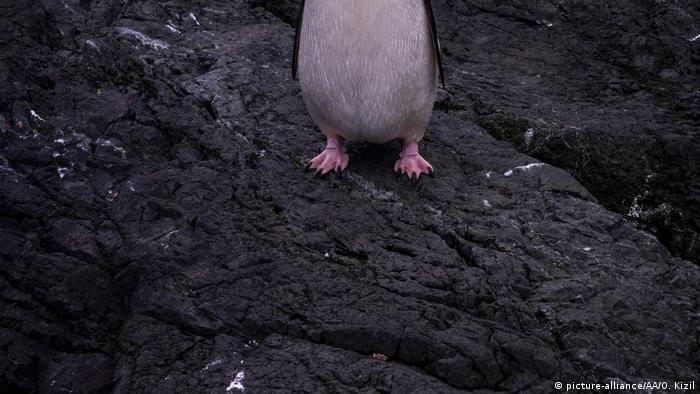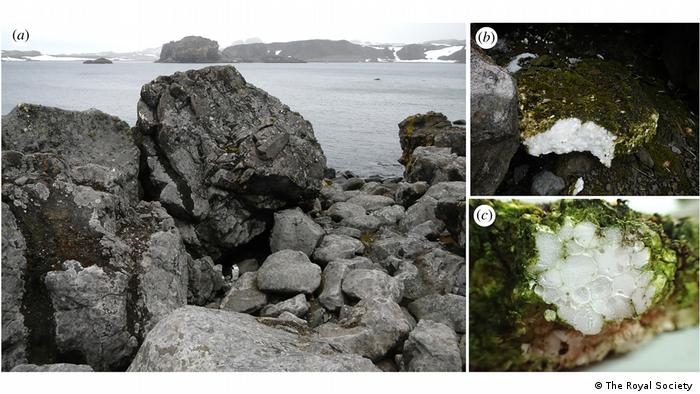Microplastics found for first time in Antarctica's food chain
Microplastics have reached one of the world's most remote food systems, a new study has found. The findings raise concerns over the future of Antarctica's fragile ecosystem, which is already threatened by climate change.

For the first time, scientists have discovered microplastics inside small organisms living in the soil in Antarctica, according to a new study published on Wednesday.
"Plastics are thus entering the short Antarctic terrestrial food webs and represent a new potential stressor to polar ecosystems already facing climate change and increasing human activities," said the authors of the study, which was published in the scientific journal Biology Letters.
The research team, which was headed by Italy's University of Siena, collected organisms from a piece of polystyrene foam that was covered in moss and lichens on King George Island.
Using an infrared imaging technique, researchers found pieces of polystyrene — which is used in styrofoam — in the guts of collembolan Cryptopygus antarcticus, or springtails.
The small organisms are frequently the "dominant species" in areas of Antarctica that are not covered by ice, typically feeding on lichens and micro-algae.
Researchers said the springtails likely consumed the plastic fragments while eating their usual food.

Plastic pollution in the Antarctic terrestrial environment: (A) Coastal fellfield at King George Island where the PS foam item was collected. (B and C) close-ups of the PS surface, overgrown with microalgae, moss and lichens
Read more: The recycling dilemma: good plastic, bad plastic?
Dangers of plastic pollution
The authors of the study said the traces indicate the microplastic pollution may have already "deeply" infiltrated Antarctica's remote land-based food system.
"The implications of plastic ingestion by this species include the potential redistribution of microplastics through the soil profile and transfer to their common predators, the moss mites," Elisa Bergami of the University of Siena told news agency AFP.
Although plastic pollution in the oceans is already widely known and well-documented, Bergami said that less attention is being paid to Antarctica's land contamination.
The presence of plastics in one of the world's most remote food chains could potentially stress Antarctica's fragile ecosystem even further.
Scientific research posts, military facilities and tourism have turned the area around King George Island in the South Shetland Islands into "one of the most contaminated regions of Antarctica," researchers said.

—with AFP
DW RECOMMENDS
Scientists say atmosphere carrying microplastics to the Arctic
Microscopic particles of plastic are entering the atmosphere and being dumped by snow, new research found. The study raises questions about the amount of microplastics humans and wildlife are inhaling. (14.08.2019)
Microplastics: Airing my dirty (nappy) laundry in public
Modern cloth nappies are a convenient alternative to disposables. But in trying to solve one environmental problem, are they contributing to another? Samantha Early aired her dirty laundry in public to find some answers. (11.11.2019)
Do fuels made from plastic make eco sense?
Several companies have come up with pilot plants to convert plastic waste into crude oil, diesel or other fuels. It is sold as a way to get rid of trash and help the environment. But is it? (18.05.2020)
No comments:
Post a Comment